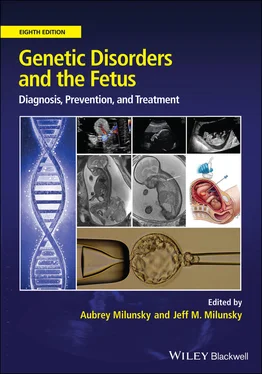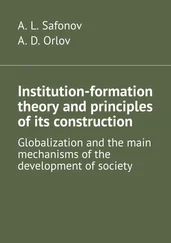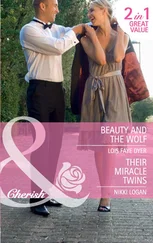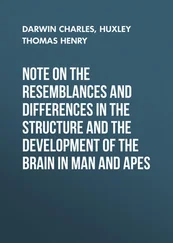Genetic Disorders and the Fetus
Здесь есть возможность читать онлайн «Genetic Disorders and the Fetus» — ознакомительный отрывок электронной книги совершенно бесплатно, а после прочтения отрывка купить полную версию. В некоторых случаях можно слушать аудио, скачать через торрент в формате fb2 и присутствует краткое содержание. Жанр: unrecognised, на английском языке. Описание произведения, (предисловие) а так же отзывы посетителей доступны на портале библиотеки ЛибКат.
- Название:Genetic Disorders and the Fetus
- Автор:
- Жанр:
- Год:неизвестен
- ISBN:нет данных
- Рейтинг книги:4 / 5. Голосов: 1
-
Избранное:Добавить в избранное
- Отзывы:
-
Ваша оценка:
- 80
- 1
- 2
- 3
- 4
- 5
Genetic Disorders and the Fetus: краткое содержание, описание и аннотация
Предлагаем к чтению аннотацию, описание, краткое содержание или предисловие (зависит от того, что написал сам автор книги «Genetic Disorders and the Fetus»). Если вы не нашли необходимую информацию о книге — напишите в комментариях, мы постараемся отыскать её.
Genetic Disorders and the Fetus — читать онлайн ознакомительный отрывок
Ниже представлен текст книги, разбитый по страницам. Система сохранения места последней прочитанной страницы, позволяет с удобством читать онлайн бесплатно книгу «Genetic Disorders and the Fetus», без необходимости каждый раз заново искать на чём Вы остановились. Поставьте закладку, и сможете в любой момент перейти на страницу, на которой закончили чтение.
Интервал:
Закладка:
5 5. Alwasel S, Abotalib Z, Aljarallah J, et al. Secular increase in placental weight in Saudi Arabia. Placenta 2011; 32:391.
6 6. Maltepe E, Bakardjiev AI, Fisher SJ. The placenta: transcriptional, epigenetic, and physiological integration during development. J Clin Invest 2010; 120:1016.
7 7. Staun‐Ram E, Shalev E. Human trophoblast function during the implantation process. Reprod Biol Endocrinol 2005; 3:56.
8 8. Luo S, Ishibashi O, Ishikawa G, et al. Human villous trophoblasts express and secrete placenta‐specific microRNAs into maternal circulation via exosomes. Biol Reprod 2009; 81:717.
9 9. Mincheva‐Nilsson L, Baranov V. Placenta‐derived exosomes and syncytiotrophoblast microparticles and their role in human reproduction: immune modulation for pregnancy success. Am J Reprod Immunol 2014; 72:440.
10 10. Salomon C, Torres MJ, Kobayashi M, et al. A gestational profile of placental exosomes in maternal plasma and their effects on endothelial cell migration. PLoS One 2014; 9:e98667.
11 11. Xie L, Mouillet J, Chu T, et al. C19MC microRNAs regulate the migration of human trophoblasts. Endocrinology 2014; 155:4975.
12 12. Hassold T, Abruzzo M, Adkins K, et al. Human aneuploidy: incidence, origin, and etiology. Environ Mol Mutagen 1996; 28:167.
13 13. Hassold T, Chen N, Funkhouser J, et al. A cytogenetic study of 1000 spontaneous abortions. Ann Hum Genet 1980; 44:151.
14 14. Blois SM, Sulkowski G, Tirado‐González I, et al. Pregnancy‐specific glycoprotein 1 (PSG1) activates TGF‐β and prevents dextran sodium sulfate (DSS)‐induced colitis in mice. Mucosal Immunol 2014; 7:348.
15 15. Noguer‐Dance M, Abu‐Amero S, Al‐Khtib M, et al. The primate‐specific microRNA gene cluster (C19MC) is imprinted in the placenta. Hum Mol Genet 2010; 19:3566.
16 16. Coughlan C, Ledger W, Wang Q, et al. Recurrent implantation failure: definition and management. Reprod Biomed Online 2014; 28:14.
17 17. PrabhuDas M, Bonney E, Caron K, et al. Immune mechanisms at the maternal‐fetal interface: perspectives and challenges. Nat Immunol 2015; 16:328.
18 18. Roberts VH, Morgan T, Bednarek P, et al. Early first trimester uteroplacental flow and the progressive disintegration of spiral artery plugs: new insights from contrast‐enhanced ultrasound and tissue histopathology. Hum Reprod 2017; 32:2382.
19 19. Wang Y. Vascular biology of the placenta. San Rafael, CA: Morgan & Claypool Life Sciences, 2010:1–98.
20 20. Kingdom J, Huppertz B, Seaward G, et al. Development of the placental villous tree and its consequences for fetal growth. Eur J Obstet Gynecol Reprod Biol 2000; 92:35.
21 21. Avagliano L, Bulfamante GP, Morabito A, et al. Abnormal spiral artery remodelling in the decidual segment during pregnancy: from histology to clinical correlation. J Clin Pathol 2011; 64:1064.
22 22. Sibley C. Understanding placental nutrient transfer – why bother? New biomarkers of fetal growth. J Physiol (Lond) 2009; 587:3431.
23 23. Syme MR, Paxton JW, Keelan JA. Drug transfer and metabolism by the human placenta. Clin Pharmacokinet 2004; 43:487.
24 24. Henderson GI, Perez T, Schenker S, et al. Maternal‐to‐fetal transfer of 5‐methyltetrahydrofolate by the perfused human placental cotyledon: evidence for a concentrative role by placental folate receptors in fetal folate delivery. J Lab Clin Med 1995; 126:184.
25 25. Solanky N, Jimenez AR, D'Souza S, et al Expression of folate transporters in human placenta and implications for homocysteine metabolism. Placenta 2010; 31:134.
26 26. Constancia M, Angiolini E, Sandovici I, et al. Adaptation of nutrient supply to fetal demand in the mouse involves interaction between the Igf2 gene and placental transporter systems. Proc Natl Acad Sci U S A 2005; 102:19219.
27 27. Coan P, Vaughan O, Sekita Y, et al. Adaptations in placental phenotype support fetal growth during undernutrition of pregnant mice. J Physiol (Lond) 2010; 588:527.
28 28. Bradley J, Leibold EA, Harris ZL, et al. Influence of gestational age and fetal iron status on IRP activity and iron transporter protein expression in third‐trimester human placenta. Am J Physiol Regul Integr Comp Physiol 2004; 287:R894.
29 29. Gangestad SW, Caldwell Hooper AE, Eaton MA. On the function of placental corticotropin‐releasing hormone: a role in maternal‐fetal conflicts over blood glucose concentrations. Biol Rev 2012; 87:856.
30 30. Mikheev AM, Nabekura T, Kaddoumi A, et al. Profiling gene expression in human placentae of different gestational ages: an OPRU Network and UW SCOR Study. Reprod Sci 2008; 15:866.
31 31. Winn VD, Haimov‐Kochman R, Paquet AC, et al. Gene expression profiling of the human maternal‐fetal interface reveals dramatic changes between midgestation and term. Endocrinology 2007; 148:1059.
32 32. Novakovic B, Yuen RK, Gordon L, et al. Evidence for widespread changes in promoter methylation profile in human placenta in response to increasing gestational age and environmental/stochastic factors. BMC Genomics 2011; 12:529.
33 33. Robin C, Bollerot K, Mendes S, et al. Human placenta is a potent hematopoietic niche containing hematopoietic stem and progenitor cells throughout development. Cell Stem Cell 2009; 5:385.
34 34. Bárcena A, Muench MO, Kapidzic M, et al. Fisher SJ. A new role for the human placenta as a hematopoietic site throughout gestation. Reprod Sci 2009; 16:178.
35 35. Tang Z, Abrahams VM, Mor G, et al. Placental Hofbauer cells and complications of pregnancy. Ann N Y Acad Sci 2011; 1221:103.
36 36. Mouillet JF, Ouyang Y, Bayer A, et al. The role of trophoblastic microRNAs in placental viral infection. Int J Dev Biol 2014; 58:281.
37 37. Bastek JA, Gómez LM, Elovitz MA. The role of inflammation and infection in preterm birth. Clin Perinatol 2011; 38:385.
38 38. Galinsky R, Polglase GR, Hooper SB, et al. The consequences of chorioamnionitis: preterm birth and effects on development. J Pregnancy 2013; 2013:412831.
39 39. Konwar C, Del Gobbo GF, Terry J, et al. Association of a placental interleukin‐6 genetic variant (rs1800796) with DNA methylation, gene expression and risk of acute chorioamnionitis. BMC Med Genet 2019; 20:36.
40 40. Pereyra S, Bertoni B, Sapiro R. Interactions between environmental factors and maternal–fetal genetic variations: strategies to elucidate risks of preterm birth. Eur J Obstet Gynecol Reprod Biol 2016; 202:20.
41 41. Ragsdale HB, Kuzawa CW, Borja JB, et al. Regulation of inflammation during gestation and birth outcomes: Inflammatory cytokine balance predicts birth weight and length. Am J Hum Biol 2019; 31:e23245.
42 42. Alberry M, Soothill P. Management of fetal growth restriction. Arch Dis Child Fetal Neonatal Ed 2007; 92:F62.
43 43. Sheridan C. Intrauterine growth restriction: diagnosis and management. Aust Fam Physician 2005; 34:717.
44 44. Halliday HL. Neonatal management and long‐term sequelae. Best Pract Res Clin Obstet Gynecol 2009; 23:871.
45 45. Pallotto EK, Kilbride HW. Perinatal outcome and later implications of intrauterine growth restriction. Clin Obstet Gynecol 2006; 49:257.
46 46. Yanney M, Marlow N. Paediatric consequences of fetal growth restriction. Semin Fetal Neonatal Med 2004; 9:411.
47 47. Barker DJ, Thornburg KL. The obstetric origins of health for a lifetime. Clin Obstet Gynecol 2013; 56:511.
48 48. Benton SJ, McCowan LM, Heazell AE, et al. Placental growth factor as a marker of fetal growth restriction caused by placental dysfunction. Placenta 2016; 42:1.
49 49. Schoofs K, Grittner U, Engels T, et al. The importance of repeated measurements of the sFlt‐1/PlGF ratio for the prediction of preeclampsia and intrauterine growth restriction. J Perinat Med 2014; 42:61.
50 50. Crispi F, Domínguez C, Llurba E, et al. Placental angiogenic growth factors and uterine artery Doppler findings for characterization of different subsets in preeclampsia and in isolated intrauterine growth restriction. Obstet Gynecol 2006; 195:201.
Читать дальшеИнтервал:
Закладка:
Похожие книги на «Genetic Disorders and the Fetus»
Представляем Вашему вниманию похожие книги на «Genetic Disorders and the Fetus» списком для выбора. Мы отобрали схожую по названию и смыслу литературу в надежде предоставить читателям больше вариантов отыскать новые, интересные, ещё непрочитанные произведения.
Обсуждение, отзывы о книге «Genetic Disorders and the Fetus» и просто собственные мнения читателей. Оставьте ваши комментарии, напишите, что Вы думаете о произведении, его смысле или главных героях. Укажите что конкретно понравилось, а что нет, и почему Вы так считаете.












